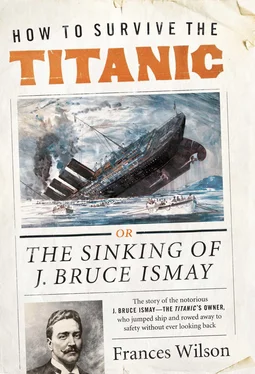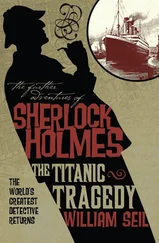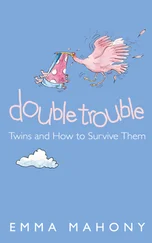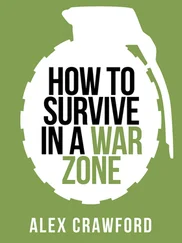But if Lightoller was keeping a secret it was because he needed also to protect himself. He had been at sea for twenty-five years; he was now thirty-eight — only three years younger than Captain Rostron — with a young family to feed and he wanted his own command. How would Lightoller, who was in bed at the time, have known that the Captain was going ‘Slow Ahead’ under Ismay’s orders? Perhaps Officer Boxhall had told him, in which case Ismay would have had to coerce Boxhall as well, but there is no suggestion that Ismay and Boxhall had any private contact whatever. And how possible is it that Ismay, dosed as he was with opiates and unable to think of anything beyond the need to delay the Cedric and replace his shoes, would have set in motion a full-scale operation of silencing the ship’s crew? The Titanic would have sunk in a matter of hours whether or not the Captain had gone Slow Ahead; it was wishful thinking on Lightoller’s part that had she stopped completely the ship might have remained afloat long enough for her passengers to be rescued.
But still, the suggestion remains. As Lawrence Beesley put it in an article for the New York Times on 29 April, in which he considered the evidence for and against Ismay’s control over the speed of the ship, ‘I admit the possibility, and there it must be left.’
Lightoller was followed to the stand by Quartermaster Robert Hichens, who had been at the wheel when the collision took place. Senator Smith knew that the White Star Line wanted Hichens out of the country; he had been one of the five subpoenaed men to be brought back from the Lapland in a US Navy pilot boat. Ismay and Lightoller listened closely as Hichens gave his evidence. He had gone to the wheel at 10 p.m. At 11.40 three gongs sounded from the lookout, followed by a telephone call ‘iceberg right ahead’. Murdoch rushed to the bridge and gave the order ‘hard-a-starboard’. Five minutes later the Captain entered the wheelhouse and saw, from the commutator on the front of the compass, that the ship had already listed five degrees. Why, asked Senator Smith, did you ‘put the ship to starboard, which I believe you said you did, just before the collision with the iceberg?’
‘I do not quite understand you, sir,’ replied Hichens.
‘You said that when you were first apprised of the iceberg, you did what?’
‘Put the helm to starboard, sir. That is the order I received from the Sixth Officer.’
‘What was the effect of that?’
‘The ship minding the helm as I put her to starboard.’
‘But suppose you had gone bows-on against that object?’ asked Smith, who now knew where the bow was.
‘I don’t know nothing about that. I am in the wheelhouse and, of course, I couldn’t see nothing.’
‘You could not see where you were going?’
‘No, sir; I might as well be packed in ice.’ The spectators absorbed the image and Hichens continued. ‘The only thing I could see was my compass.’
‘The officer gave you the necessary order?’
‘Gave me the order, “Hard-a-starboard”.’
‘Hard-a-starboard?’
‘Yes, sir.’
‘You carried it out immediately?’
‘Yes, sir; immediately, with the Sixth Officer behind my back, with the junior officer behind my back, to see whether I carried it out — one of the junior officers.’ Neither officer had survived.
Whether they were referring to the iceberg or to the passengers, the witnesses at the inquiry often described seeing nothing. The problem with witnesses, Senator Smith realised, was that they had been there. Their presence makes them unreliable. In an essay about the bombing of Dresden in On the Natural History of Destruction, W. G. Sebald wrote: ‘The death by fire within a few hours of an entire city, with all its buildings and trees, its inhabitants, its domestic pets, its fixtures and fittings of every kind, must inevitably have led to overload, to paralysis of the capacity to think and feel in those who succeeded in escaping. The accounts of individual eye witnesses, therefore, are of only qualified value.’
Quartermaster Hichens was released. He had not, Lightoller also confided to his wife, told the truth. But nor had Lightoller, who, according to his granddaughter, concealed from the inquiry that when he went to Murdoch’s room to collect a firearm he was told that Hichens, ordered by Murdoch to steer ‘hard-a-starboard’, meaning that he should turn to port, had turned the wrong way. If Hichens had indeed done this, it was an understandable error; in 1912 sailing ships and steamships operated two different steering communication systems, rudder orders for steamships and tiller orders for sailing ships, which meant the opposite of one another. Sailors who started their careers on ships which were steered by tillers connected directly to the rudder had to get used to ships now steered by wheels, and the confusion was the cause of many collisions. The Titanic operated tiller orders on the North Atlantic and Hichens, who had not sailed the North Atlantic before, followed rudder orders. In his panic, he did the reverse of what he should have done. The truth, Ismay apparently told Lightoller, would be the end of the White Star Line and all those who knew about it were told to say nothing. The fact that Hichens never mentioned his error throws some doubt on the story. But Ismay was clearly anxious, for reasons of insurance and reputation, that the collision be seen as an Act of God rather than human error. Lightoller saw that Hichens was put into Lifeboat 6, along with Frederick Fleet, the lookout, and Major Peuchen. The shaken quartermaster accepted the offer of some whisky and steered the tiller with his back to the sinking ship. Hichens was the only man, apart from Ismay, not to look when the Titanic went down.
Lightoller had initially been appointed First Officer on the Titanic, but found himself demoted when ‘the ruling lights of the White Star Line’ decided at the last minute to draft in Chief Officer Wilde, who had useful experience of the Olympic. ‘This doubtful policy threw Murdoch and me out of our stride; and apart from the disappointment of having to step back in our rank, caused quite a little confusion.’ 19Everyone changed places: Murdoch, who had been Chief Officer, was now First Officer, Lightoller was now Second Officer, and the original Second Officer was sent home. As a Christian Scientist, Lightoller believed that death was an illusion, man was indestructible, and the power of prayer would help overcome suffering and distress. In an article for the Christian Science Journal he described his ‘miraculous’ survival and his understanding that knowledge of the ‘Truth’ had saved him. But as the ‘solitary survivor of over fifty officers and engineers’, he was now isolated; his dead friends and fellows had at least ‘escaped the never-to-be-forgotten ordeal carried out in Washington’. 20
Lightoller was caught between bedding down in a cheap hotel with an unpaid crew and conspiring with the officials of the White Star Line. First Captain Smith and now Ismay had fallen to pieces, leaving the most senior surviving officer to do his duty for the company. ‘A washing of dirty linen would help no one,’ Lightoller said of his performance at the inquiries. 21He was loyal to the White Star Line but he was also a wild card, and Lightoller obeyed a higher law than the US Senate Subcommittee. He took risks, he told lies, and he changed his story when it suited him. He knew how to make words work; some of Lightoller’s phrases, such as the remark that he did not leave the ship, the ship left him, would become famous (Ernest Jones reminded Freud of Lightoller’s expression when he was trying to persuade the psychoanalyst to leave Vienna in 1938). An exchange with Senator Bourne about the absence of searchlights on the Titanic shows Lightoller — whose very name is Dickensian — to be a master of language: ‘A searchlight’, he explained, ‘is a peculiar thing, and so is an iceberg. An iceberg reflects the light that is thrown on it, and if you throw the light on an iceberg it turns it to white, and if you throw it on the sea it turns it to white.’ Lightoller could conjure up images, hold an audience in his hand. Only in Titanic and Other Ships, published two years before Ismay died, did Lightoller tell the full-blooded sea yarn he denied the crowd in America. No longer the silent movie he described at the inquiry, Lightoller now turns up the sound and lets us hear the night. It was impossible, he reveals, to give orders to the crew and the passengers because of ‘the appalling din’, the ‘infernal roar’, of the steam being released when the engines stopped. Lightoller had to cup his hands to the Captain’s ear and shout to ask him if the boats should be put out. After half an hour, when the ship is still and the noise has ceased, ‘there was a death-like silence a thousand times more exaggerated’. 22
Читать дальше












